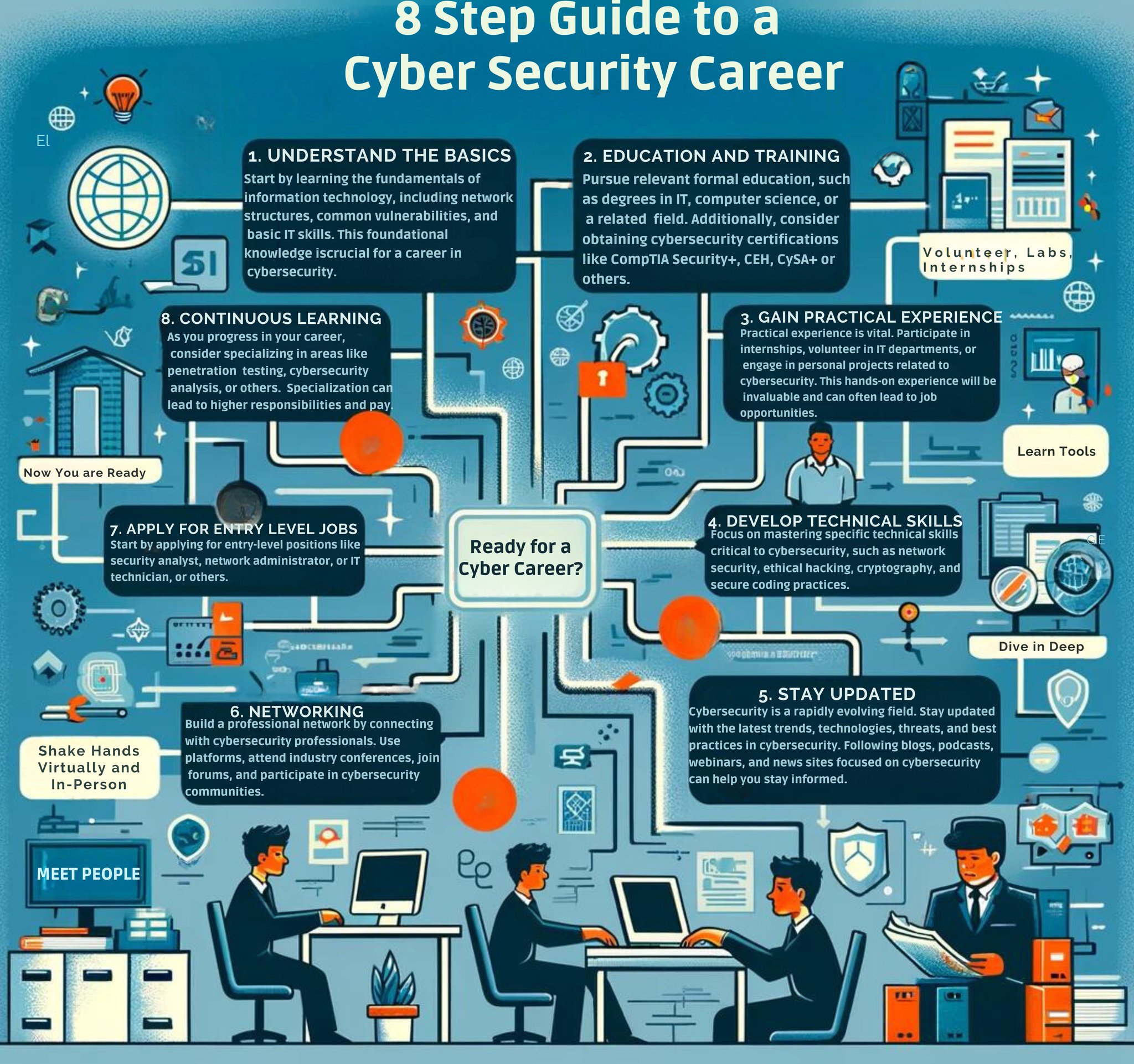Computer Science Cyber Security focuses on protecting computer systems from theft or damage. It encompasses technologies and practices that secure networks and data from cyber threats.
As the digital landscape grows more complex, the discipline of Computer Science Cyber Security becomes increasingly vital. It blends elements of information technology, criminal psychology, and digital forensics to create robust defense mechanisms. Professionals in this field strive to thwart malicious attacks, such as hacking, phishing, and malware distribution.
They also work to prevent unauthorized access to data and maintain confidentiality, integrity, and availability of information. Through a combination of hardware and software solutions, security protocols, and educational initiatives, cyber security experts aim to fortify the cyber world against constant threats. Their work underpins the trust we place in our digital interactions and the safekeeping of sensitive information.
Introduction To Cyber Security In Computer Science
The world of digital data continues to evolve, and with it, the need for Computer Science Cyber Security. The protection of our digital assets is now critical, making the role of cyber security in computer science paramount.
The Intersection Of Technology And Security
Computer Science and cyber security work together. They protect data and avoid hacking. Understanding technology’s behavior helps design strong security systems.
Security = Function(Computer Science + Technology Understanding)
Programs learn and adapt quickly. Significant investment in cyber security systems is crucial. Both the public and private sectors now recognize this.
Why Cyber Security Matters More Than Ever
Digital threats increase as society becomes more dependent on technology. Personal data, business records, and government files pose attractive targets. Protecting these is urgent.
Cyber attacks are constantly evolving:
- Phishing attacks trick people into providing sensitive data.
- Ransomware locks you out of your systems until you pay.
- Man-in-the-middle attacks steal data from two-party transactions.
Besides financial damage, cyber attacks harm reputations. Organizations cannot afford to overlook the importance of cyber security.

Credit: twitter.com
Fundamentals Of Cyber Security
Understanding the Fundamentals of Cyber Security is crucial in today’s digital age. It involves guarding computers and servers against threats and attacks. In this blog, you will learn about the basics of Cyber Security in Computer Science.
Key Concepts And Terminology
Cyber Security is a practice. It aims to protect computers, servers, and data from digital attacks. Let’s understand a few basic terms:
- Virus: A harmful program that spreads to multiple devices.
- Firewall: It blocks untrusted networks while allowing trusted ones.
- Malware: Software explicitly designed to damage computers.
Types Of Cyber Threats And Attacks
Multiple types of cyber threats exist. Each type aims to compromise digital assets. A few types are:
| Threat | Description |
|---|---|
| Phishing | Users get tricked into revealing sensitive information. |
| Ransomware | Access to a user’s data gets blocked unless a ransom is paid. |
| Spyware | Software that spies and gathers information without the user’s knowledge. |
Knowledge on these topics can help stay safe from the risks of cyber threats.
Pillars Of Cyber Security
Every castle stands strong on its pillars, and so does cyber security. These vital pillars keep information secure in a world full of digital threats. They help protect our data from cybercriminals. Let’s explore these pillars known as the CIA Triad.
Confidentiality
Confidentiality is like a secret between you and your best friend. It means keeping sensitive information away from the wrong hands. It ensures that private details stay private.
- Encrypt important files.
- Use strong passwords.
- Limit who can see the information.
Integrity
Integrity keeps our data accurate and trustworthy. Like a puzzle, every piece must be in place. No one should change it without permission.
- Check for data tampering.
- Use software to protect your data.
- Train employees to spot scams.
Availability
Availability means having access to our info when we need it. Imagine it as a door that should always open for you but stay locked for strangers.
- Keep systems up-to-date.
- Have a backup plan.
- Protect against viruses that can lock files.
Protective Measures And Best Practices
To guard these pillars, we adopt certain security measures. Let’s dive into some key practices.
| Action | Benefit |
|---|---|
| Regular updates | Fixes security holes |
| Two-factor authentication | Adds extra security layer |
| Employee training | Reduces human errors |
Remember, staying safe online is like keeping a dragon in a castle. You need strong walls, sharp swords, and brave warriors. The pillars of cyber security are your walls. The protective measures are your swords. And you, along with informed employees, are the warriors.

Credit: www.simplilearn.com
Cyber Security Technologies
The digital world constantly faces threats, making cyber security technologies crucial for protection. These technologies guard against hackers and secure data. Understanding key tools like encryption, access control, and software defenses provides insight into cyber security’s frontline arsenal.
Encryption And Access Control
Encryption scrambles data, making it unreadable without a key. It ensures private information stays secure during transmission. Banks, for instance, use this to protect transactions.
Access control limits who can view or use data. It relies on permissions and roles to keep sensitive information out of the wrong hands.
Firewalls, Antivirus, And Anti-malware Software
Firewalls act as barriers between trusted and untrusted networks. They monitor traffic and permit or block data by rules.
- Antivirus software guards against virus attacks.
- Anti-malware detects and removes broader threats like spyware.
These software solutions are regularly updated to combat new threats, making them essential for ongoing defense.
The Human Factor In Cyber Security
People play a huge role in computer science cyber security. Risks often arise from human error, not just technology flaws. To effectively guard against cyber threats, we must understand the human factor. This involves areas like training, social engineering risks, and insider threats.
Training And Awareness Programs
Education acts as the first line of defense in cyber security. Without it, users remain unaware of potential dangers. A training program can teach key security concepts. Examples include password stake, the dangers of phishing, and safe browser habits. Regular updates help employees stay clued-up on the latest threats.
- Password stake involves creating strong, unique passwords.
- Phishing is a common scam aiming to steal confidential information.
- Safer browsing habits reduce the chances of infecting a computer with malware.
Social Engineering And Insider Threats
Social engineering exploits human psychology. Cybercriminals trick individuals into revealing sensitive data. For instance, they might pose as a trusted colleague asking for login details. Understanding these tactics can prevent costly mistakes.
| Type of Social Engineering | Description |
|---|---|
| Phishing | Scammers send emails pretending to be trustworthy entities to steal information. |
| Baiting | Deceivers offer something enticing to trick victims into providing personal data. |
| Pretexting | Attackers create a fake scenario to gain the victim’s trust and extract sensitive data. |
Insider threats also pose a significant risk. Current or former employees can misuse access to confidential data. Firms can combat this through robust access control and ongoing monitoring.
Emerging Trends And Future Challenges
Explore the future of Computer Science Cyber Security with emerging trends and impending challenges. Understand how this field is rapidly evolving to combat new threats in the digital landscape. Stay abreast of advancements and prepare to address the future cyber security concerns.
Computer Science Cyber Security is always evolving. New security trends are surfacing. The future holds exciting but challenging prospects.
Artificial Intelligence In Cyber Defense
Artificial Intelligence (AI) is impacting cyber defense. It helps identify threats faster. AI saves valuable time and resources.
- AI can analyze huge amounts of data.
- It recognises potential threats at remarkable speed.
- AI helps in automating response to threats.
Despite these features, AI is not foolproof. It also brings new challenges. Insecure AI systems are a concern. They can get exploited by cyber criminals. Thus, making AI systems secure is vital.
Preparing For Quantum Computing And Iot Vulnerabilities
Quantum computing is on the rise. It can alter cyber security landscapes. IoT (Internet of Things) devices are also increasing.
Quantum computers are powerful. They can crack current encryption algorithms. This poses a huge risk.
IoT devices are common targets for cyber attacks. Hence, securing them is a big concern.
- Adopting quantum-resistant algorithms is necessary.
- Secure design and continuous testing can protect IoT devices.
Cyber security trends are both exciting and challenging. Staying ahead of these challenges is a must to secure our digital world.

Credit: www.simplilearn.com
Frequently Asked Questions On What Is Computer Science Cyber Security
What Is Better Computer Science Or Cyber Security?
Choosing between computer science and cybersecurity depends on your career interests. Computer science offers broad tech foundations, while cybersecurity focuses on protecting data and systems. Each has distinct career paths and specializations, making one no better than the other—it’s about personal preference and goals.
Is Computer Science Cyber Security Hard?
Computer science cyber security can be challenging due to technical complexities and the evolving nature of threats, requiring ongoing learning and adaptation.
Is Cybersecurity A Good Career?
Yes, cybersecurity is a distinctively rewarding career. It offers high income, opportunities for continuous learning, and a sense of contribution. Rising technology dependency amplifies cybersecurity’s value, fueling demand for these professionals. Their vital role ensures our digital world remains secure and smooth.
What Degree Is Needed For Cyber Security?
A bachelor’s degree in computer science, information technology, or a related field is usually required for a career in cyber security. Additional specialized training or certifications in cyber security can also be beneficial.
Conclusion
Understanding the critical role of Computer Science Cyber Security is paramount for the protection of our digital assets. With increased cyber threats emerging daily, this field carries immense importance. Securing our virtual space is no longer optional, but a necessity, making cyber security a compelling career choice for computer science enthusiasts.
Remember, a safe digital community is a collective responsibility.













































Leave a Reply